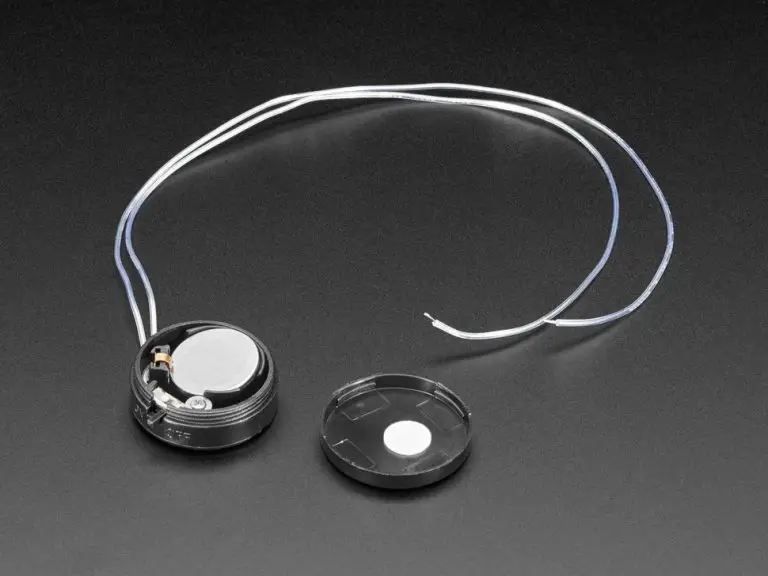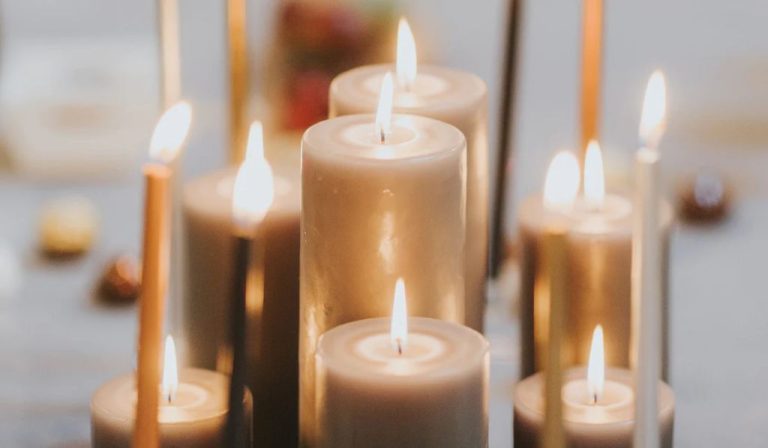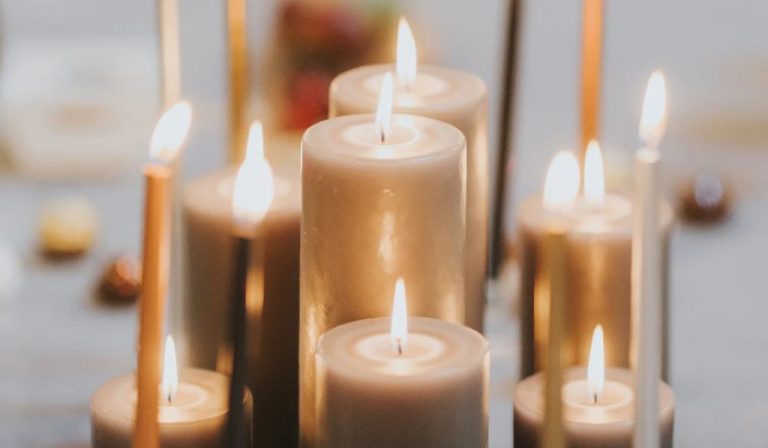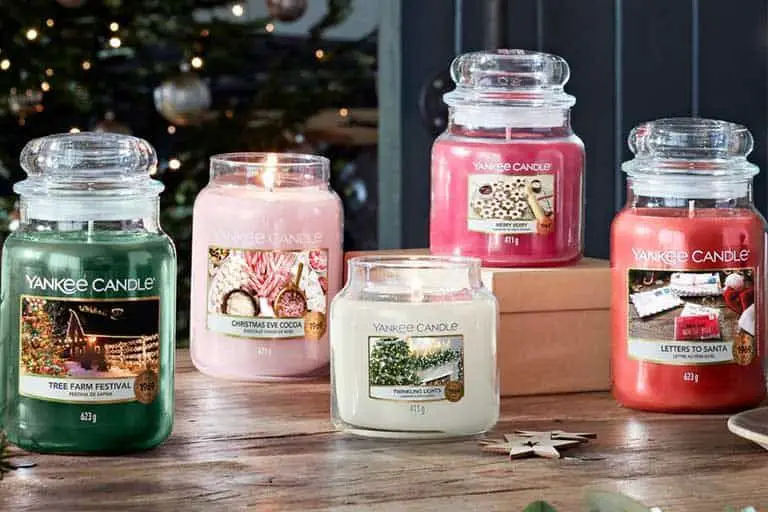How Many Tealights Does It Take To Heat A Room?
What are tealights and how do they produce heat?
Tealights are small candles encased in thin metal or plastic cups (Wikipedia). The metal or plastic cup allows the wax to liquefy completely when lit. Tealights are typically small, circular candles that are wider than their height and the enclosed cup contains the melted wax while the candle burns.
Tealights produce heat through the basic process of combustion. As the wick is lit, it melts the solid wax around it which is then drawn up the wick via capillary action. The heat of the flame vaporizes the liquid wax which is then combusted by the flame. This chemical reaction between the wax vapor and oxygen releases energy in the form of light and heat (Candlemakinghelp). The cup containing the tealight absorbs some of this heat and dissipates it into the surrounding environment through conduction and radiation.
How much heat does one tealight produce?
A single tealight candle produces around 30-40 watts of heat energy, or about 100-150 BTU per hour, according to sources. This is equivalent to the heat produced by a very small electric space heater on its lowest setting. For comparison, an average adult human at rest radiates about 100 watts of body heat (source).
Tealights burn for approximately 3-4 hours before going out. So over the course of its burn time, one tealight outputs around 300-600 BTUs of heat energy in total. This is enough to provide personal heating for a small enclosed space like a tent or ice fishing shanty. But a single tealight does not produce enough heat to warm an entire room in a house.
Factors that affect tealight heating ability
There are several key factors that determine how effectively a tealight can heat a room:
Tealight burn time – Tealights typically burn for 3-6 hours. The longer they burn, the more heat they can produce over time. However, tealights start to produce less heat as they near the end of their burn time. So fresh tealights generate more heating power than those that are almost burnt out.
Enclosed vs open space – Tealights produce more concentrated heat in an enclosed, small space compared to heating an open room. The heat dissipates more quickly in a large, open area. Enclosing tealights in a terracotta pot helps contain and radiate the heat into the room.
Insulation level of room – Well-insulated rooms retain heat better than poorly insulated spaces. Drafts, doors, windows, and high ceilings allow heat to escape easier. Insulation helps the tealights’ warmth stay concentrated in the room.
By optimizing these factors, tealights can produce and retain more heat energy in the room they are placed in. But their capabilities are still quite limited compared to traditional heating methods.
How much heat is needed to warm a room?
The amount of heat needed to warm a room depends on several factors including the room’s size, insulation, and the outside temperature. Heat is measured in BTUs (British Thermal Units) or Watts. According to Ferrellgas, an average room requires 7,000-12,000 BTUs per hour to raise the temperature by 1 degree Fahrenheit. Smaller, well-insulated rooms need less, while larger, drafty rooms require more. The Heat Design calculator estimates that a 300 sq ft room needs around 7,000 BTUs to maintain a comfortable temperature. For a 1,000 sq ft room, closer to 24,000 BTUs per hour is recommended (source). The colder it is outside, the more heat is needed to compensate.
Calculating the number of tealights needed
To calculate how many tealights are needed to heat a room, you need to consider the heat output of a single tealight and the amount of heat required to raise the temperature of the room. Here is a basic formula to determine the number of tealights (N) needed:
N = Room heating needs (BTUs) / Heat output per tealight (BTUs)
The heat output of a standard tealight candle is approximately 40 joules per second, or 136 BTU per hour. The heating needs of a room depend on factors like the size of the room, insulation, and desired temperature rise. For a 10 ft x 10 ft room, around 5000 BTU per hour may be needed to significantly warm the space.
Using these example values:
Room heating needs: 5000 BTU/hour
Tealight heat output: 136 BTU/hour
N = 5000 BTU/hour / 136 BTU/hour per tealight = ~37 tealights
So for a 10×10 ft room, around 37 tealights may be needed per hour to provide significant heating. The actual number could vary depending on insulation, desired temperature rise, and other factors. Testing different amounts may be needed to reach the desired warming effect.
Tealight arrangements for heating
There are two main ways to arrange tealights for heating a room – clustered or distributed layouts. With a clustered layout, the tealights are grouped close together into a tight formation. This concentrates the heat into a single area. A distributed layout spreads the tealights out around the room, which disperses the heat more evenly. There are advantages and disadvantages to each approach.
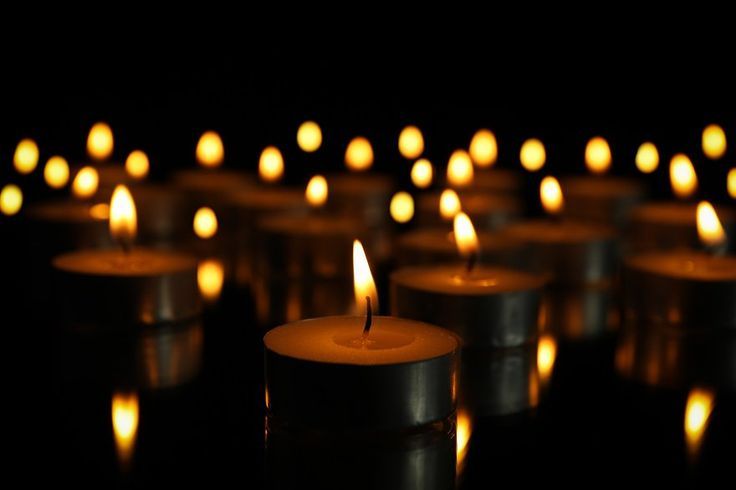
Clustering the tealights can create a warmer microclimate in one part of the room. This is useful if you only need to heat a small area like your desk or bed. However, it does not warm the whole room evenly. Distributing the tealights lets the heat circulate better around the entire room. But the overall temperature increase may be marginally lower. Consider your specific heating needs when deciding on the layout.
To maximize airflow and heating efficiency, elevate the tealights off the floor. Putting them on shelves, tables or stands raises them into the warmer air and provides more oxygen to the flame. Make sure they are out of reach from children and pets. Group them away from flammable items. Never leave burning tealights unattended.
The safest arrangement is to distribute tealights around the room, while elevating them on stable, non-flammable surfaces. This provides an even heat distribution and reduces fire risks. Always exercise caution when using open flames for heating.
Heating Duration and Tealight Changing
Tealights typically burn for 4-6 hours before going out (https://www.amazon.com/Northern-Lights-Candles-Long-Burning-Tealights/dp/B000B8WZH2). This means you will need to replace tealights frequently to maintain steady room heating. Tealights that are left to burn out on their own will stop generating heat, so it’s important to have a plan for swapping fresh tealights in on a regular schedule.
To sustain tealight heating overnight, you may need to get up every 4-6 hours to replace burned-out tealights. Make sure tealights are arranged safely and have sufficient clearance so they can be accessed and changed easily without risk of fire. Have plenty of spare tealights on hand so fresh ones can be lit and swapped in seamlessly.
Changing numerous tealights frequently can become labor intensive. Consider safe ways to automate or streamline the process, like using long fireplace lighters to relight tealights without having to remove each one individually. Proper planning for tealight changing is essential for continuous, effective, and safe room heating.
Tealight Heating Compared to Other Methods
While using tealights to heat a room may seem like an inexpensive and convenient option, there are some key factors to consider when comparing tealights to other heating methods:
Cost: Operating a space heater for an hour requires about 1-1.5 kWh of electricity, costing around $0.15-0.20 depending on local energy prices. In comparison, a pack of 100 tealights costs around $10-15. For continuous heating, the tealights would need to be replaced every few hours at a comparable or potentially higher cost than a space heater (https://unolusso.com/blogs/news/tealight-vs-electric-wax-melt-burner-which-one-is-best-for-your-home). However, tealights may be more cost effective for intermittent, short-term heating needs.
Convenience: Electric space heaters provide hands-off, thermostatically controlled heating. Tealights require manually lighting each candle, monitoring them, replacing them frequently, and handling hot dishes. For continuous heating, tealights are far less convenient.
Safety: Tealights carry a potential fire risk if left unattended, knocked over, or placed near flammable materials. Space heaters also require caution but often have automatic shut-off features if tipped over. Fireplaces and wood stoves may have the highest safety risks of the heating methods compared here.
Overall, for a quick and inexpensive way to provide a small amount of extra warmth, tealights have their place. But for whole room heating over longer periods, an electric or gas heating system is likely to be more practical and cost-effective. Proper safety precautions should be taken with any heating source.
Limitations and risks of tealight heating
While using tealights to provide supplemental heat may seem like an inexpensive and convenient option, there are some important limitations and safety risks to consider.
One major concern is the fire hazard posed by having numerous open flames in an enclosed space. According to this source, burning 40-50 tealights at once can result in dangerous build up of toxic gases like carbon monoxide. Tealights should never be left unattended and extreme caution is warranted.
Attempting to fully heat a room with tealights alone is not recommended. As noted in this analysis, the small amount of heat produced by tealights is insufficient for effective room heating. Tealights are better used as a supplemental heat source along with other more powerful heating methods.
Overall, while tealights can provide a small amount of extra warmth, they come with fire risks and should not be relied upon as a primary heat source. It is better to use proper heating equipment and methods to warm a room effectively and safely.
Conclusions on heating with tealights
In summary, while technically possible to heat a small room using just the radiant heat from tealights, it would require hundreds of candles burning simultaneously. This creates significant safety risks and is not recommended.
A few key takeaways from our analysis:
- On average, one tealight candle produces around 80-100 BTUs of heat energy per hour when burning.
- To increase the heating effect, multiple tealights can be grouped together into arrangements. However, the fire hazard also increases dramatically with more candles.
- Heating even a 100 sq ft room would require over 200 tealights burning at once to reach 70°F.
- The heating effect is limited by the small flame size and wax capacity of tealights.
- Ventilation is required to avoid dangerous build up of smoke and carbon monoxide.
In conclusion, while an interesting idea in theory, attempting to heat a room solely with tealights is not recommended. The fire risk is too high. It would be safer and more effective to use other dedicated heating methods.

